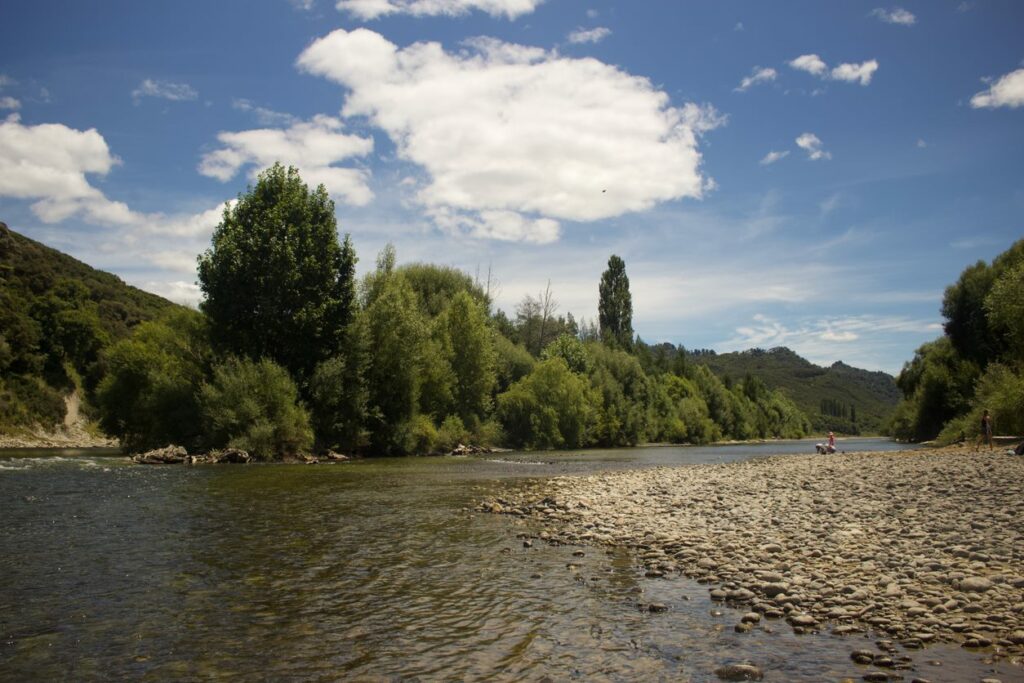- Vision Mātauranga
Research Programme
- Meri Haami
Te Atawhai o Te Ao - Rāwiri Tinirau
Te Atawhai o Te Ao - View the full team
Project Leaders
-
Budget
$150,000 -
Duration
February 2022 – February 2024
-
Completed project
Moutoa Island Restoration
Tamariki and rangatahi working with elders to restore the environmental and legal rights of Moutoa Island in a changing climate
Te Morehu Whenua is a rangatahi- and tamariki-led environmental group of the hapū of Rānana Marae. Moutoa Island is located at Rānana, in the middle reaches of the Whanganui River.

It is considered a wāhi tapu with a complex history of warfare, recreation and mahinga kai. Moutoa Island marks certain areas where pā tuna, pā ngaore and other kai structures were once located. In this action research project, our young people sought to restore the environmental and cultural health of Moutoa Island. Our intergenerational research also examined the climate adaptivity inherent within the “legal personhood” framework of the Whanganui River.
The Whanganui River is highly vulnerable to climate change, and particularly to the kinds of extreme storms that bring unprecedented levels of rain and river flow. Yet climate extremes are very hard to plan for and almost impossible to predict. There is also increasing awareness that restoring native habitat is protective against climate change – and is a form of climate adaptation.
Moutoa Island has already changed drastically due to climate change. We have seen increasing flooding, erosion and sedimentation. This research project represented the first time our Te Morehu Whenua group focused on climate change and restoration, specifically by harnessing our mātauranga-ā-hapū and scientific methods. Our young people established an eco-sourced nursery, to support our restoration.
Our research also asked whether the legal protection framework for the river (including its kawa and its hapū-based understanding of mana motuhake) is sufficiently adaptative to manage uncertainty around climate extremes. Our research drew on the depths of our mātauranga, to test whether we have the tools we need to restore and enhance the health and well-being of the Whanganui River, which is is inextricably tied to the health and well-being of Whanganui iwi.
Ultimately, our research sought to support intergenerational action for Moutoa Island, and the entire Awa, to protect against the worst foreseeable climate impacts.
Read a plain-language summary of this project here.
In the media:
- Museum Notebook: The Battle of Moutoa, Whanganui Chronicle
PROJECT TEAM
-
Meri Haami
Te Atawhai o Te Ao -
Rāwiri Tinirau
Te Atawhai o Te Ao -
Jade Hyslop
Manaaki Whenua -
Connor Pauro
Te Atawhai o Te Ao / Rānana Māori Committee